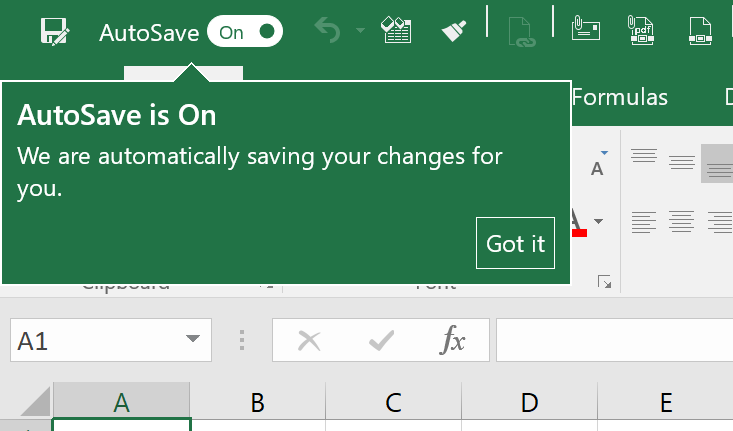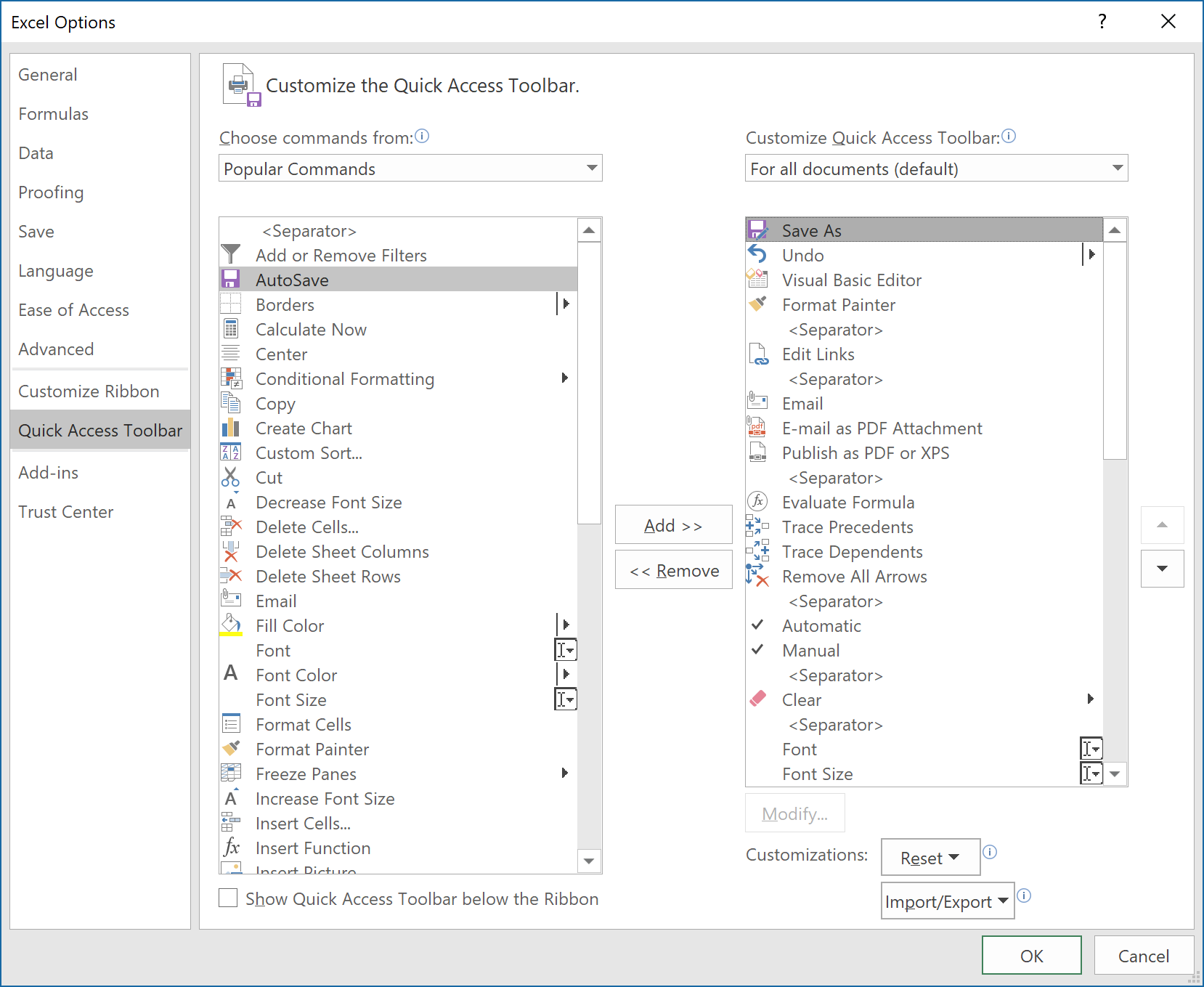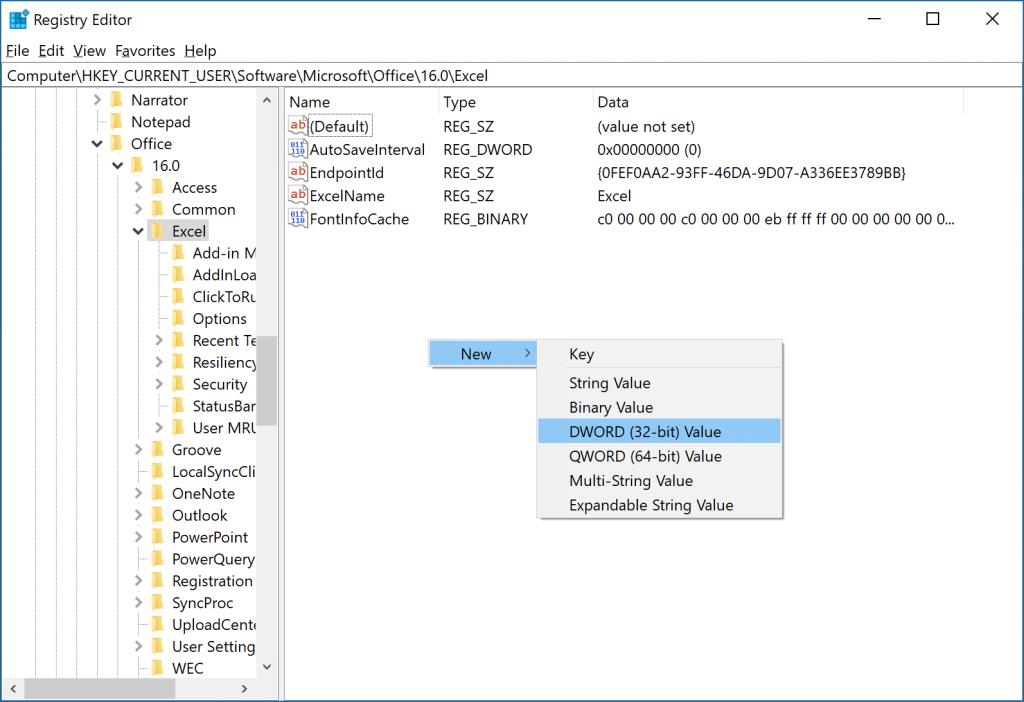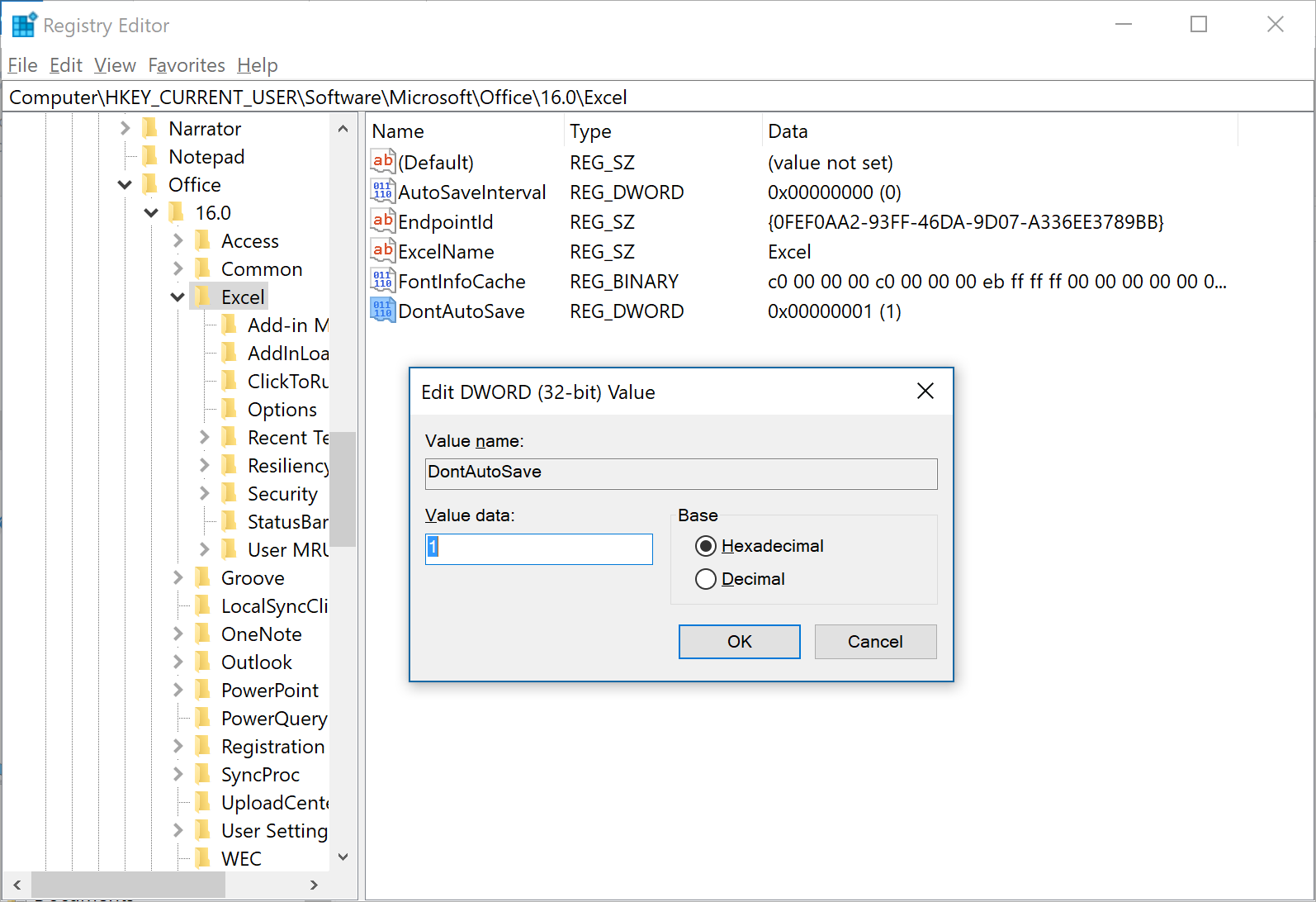The Office suite recently introduced a new AutoSave feature for OneDrive and SharePoint users. Probably with good intentions, Microsoft – like so often – did this exactly the wrong way: There is no option to disable it permanently and for all files at once. You can only do it for each file individually. What is so bad about that, you might ask. The problem is that every time you open a file that is located in your OneDrive or SharePoint folder, it saves every change you do. So what if you just want to look something up in an old file? Or you want to use an old file, do some changes and save it under a new name?
AutoSave vs. AutoRecover
So, AutoSave, you might say, didn’t I have this option for a long time already? Actually, there is a similar option which is still available in Office. It’s called AutoRecover. AutoRecover saves a copy of you file in a time period which you can define, e.g. every 10 minutes.
My opinion: If the AutoRecover function would work well, it’s a good method to make sure you have some kind of backup of your work. Unfortunately, especially for larger Excel files, it seems to not really work properly. I even gained the impression that the AutoRecover function was the reason for Excel crashing.
How to disable AutoSave for one file only

If you only want to disable the new AutoSave function for the current file, just click on the AutoSave button in the Quick Access Toolbar. The first time you use the AutoSave function you might also see a notification is shown on the image on the right-hand side.
If the AutoSave toggle button is missing: Activate it again

So what if you don’t have the AutoSave toggle in your Quick Access Toolbar? Unfortunately the only option is to add it to the Quick Access Toolbar. In a nutshell right-click on the Quick Access Toolbar, then click on “Customize Quick Access Toolbar”, select “AutoSave” and click on “Add >>”. If you need assistance with the Quick Access Toolbar please refer to this article.
How to disable AutoSave permanently for all files
As mentioned before, there is no built-in way to disable the AutoSave function permanently from within Excel, PowerPoint or Word. However, you can achieve this by adding a value to the Windows registry. One word of caution: Please be careful when editing the Windows registry. Wrong changes can have a major impact on your computer.
There are two options of setting the correct value to the registry. Manually and automatically by downloading and opening a file.
Change the registry manually

Follow these steps for adding the registry entry to disable the new AutoSave function in Excel manually.
- Open the registry. To achieve this, press the Windows key (or click on start) and type “regedit”.
- Press two times Enter to open the registry (and to confirm that the app is allowed to make changes to the computer).
- Navigate to the following folder path on the left-hand side. You can also just copy the following path and paste it in the top bar (but depending on your current version of Office it might not work properly).
Computer\HKEY_CURRENT_USER\Software\Microsoft\Office\16.0\Excel

- Right-click below the last key available and add a new “DWORD (32-bit) value”.
- Rename the new key to “DontAutoSave”.
- Double-click on the new entry in order to change the value. Type 1 (instead of 0).
- Save it and restart Excel.
Please note the following comments.
- If you want to enable the AutoSave function again change the value in step 6 above back to 0.
- For also disabling the AutoSave function in Microsoft PowerPoint or Microsoft Word, replace the last step “Excel” in number 3 above by PowerPoint or Word.
Do you want to boost your productivity in Excel?
Get the Professor Excel ribbon!

Add more than 120 great features to Excel!
Change the registry with a shortcut
If you don’t want to navigate through the Windows registry yourself, we’ve prepared files for you to download. Depending on which Office program you want to disable the AutoSave in, download the respective file below. Open it and confirm the security question. That’s it.
If you want to restore or re-enable the function, use the respective file below.
 Download
Download
Please feel free to download all mentioned registry entries below.
| Disable AutoSave for… | Enable AutoSave… |
|---|---|
| Excel | Excel |
| PowerPoint | PowerPoint |
| Word | Word |
| Excel, PowerPoint and Word at the same time | Excel, PowerPoint and Word at the same time |
or download all files as one zip file.


Worked perfectly!!! Thanks.
Works perfectly! Thank you so very much!
Thank you
Is there a way to autosave local files?
Thank you! The new “feature” never bothered me, I just adjusted my habits around the problem and kept plugging. My boss however…after nearly an hour long lecture on the idiocy of a change I had absolutely no control over, I decided to see if someone had created a useful workaround. Works like a charm, thanks again.
Sometimes, the update approach of Microsoft is a mystery to me and I keep wondering if they do something like user studies? However, in general I support that they keep innovating. But sometimes I’d like them to keep a little bit the user in mind… 🙂
It worked !!! Thanks A Million !!!
Glad it helped 🙂
This did not work for me. I have three computer – two laptops and one desktop. This works on the laptops but not on the desktop. Is it possible that there is another setting that is overriding it?
Doesn’t work. Tried several times.
Will it work for MS Project Professiona?
Thank you. This new “feature” has been completely annoying. The last save date was an important piece of information. That was lost after accessing a file.
I just don’t understand Microsoft. If users haven’t learned to save as they go by now and need this nanny feature, they shouldn’t be anywhere near a computer.
This doesnt work as you can still manually click the AutoSave in the title-bar. Far from permanent.
Forced Autosave For Everybody is one of those features that I can only image came about because they let one of the more Aspie-prone developers run wild. Every time you make a decision for the user, you fail them. Provide options, don’t try and make decisions for users. Because you will invariably find those decisions come from your own blinkered viewpoint. Autosave is a classic example. If you come from the assumption that you’d never want to lose any data you typed, it would make sense. But this article describes the many, many scenarios when that assumption doesn’t hold true. This would baffle the designer of this feature, because they can only see their own point of view to the exclusion of all others.
Dear developers: if you’re still having trouble understanding what is so annoying about this feature, just imagine that users had a feature to delete your code every time you switched off your PC. Some users want to be able to edit data then abandon what they’ve typed for a safely-saved version. All they’d be doing is applying their needs to your problem. If you don’t click “save”, you obviously didn’t want to keep all that work, did you?
This ‘feature’ drives me nuts. I use something called Jet Reports which automatically updates spreadsheet templates with live data from our ERP system, taking into account user-specified parameters. This when mixed with AutoSave and Save As can mean huge problems.
Say I have a file called “Customer Outstanding Invoices” and have AutoSave off. I “refresh” it for Customer A and Save As “Customer A Outstanding Invoices” – it turns AutoSave on. I then refresh for Customer B but in doing so it overwrites the file “Customer A Outstanding Invoices” with Customer B’s details and data. I then save as Customer B Outstanding Invoices and repeat for Customer C. At the end I’ve lost all info relating to Customer A, and each file I’ve saved actually has details for the next customer with the last customer’s details actually being in two files with different names.
I hate it! The key DontAutoSave mentioned above has apparently now been deprecated so doesn’t work on newer updates to Office. Instead there’s autosavebydefaultadminchoice but that doesn’t work for me either. I also saw a similar key autosavebydefaultuserchoice but again, that doesn’t seem to work. I give up. I’m moving all my spreadsheets outside of OneDrive and SharePoint. For me AutoSave is not only counter-productive, it’s downright dangerous.
I have tried the suggested solution on two computers but without success. In other words, autosave continues to occur, despite being turned off via the switch on the file, under options, and now with the registry edit. Do you have any suggestions on what else I could try? Very frustrating issue and mind blowing that Microsoft doesn’t make this easier.
in answers.microsoft.com,cal222 Replied on February 16, 2022:
Click the Upcoming Features button near the right end of the title bar (the little horn icon) and turn off the “new experience” switch near the bottom of the Coming Soon pane. Restart Excel and Poof! The annoying autosave feature is gone.